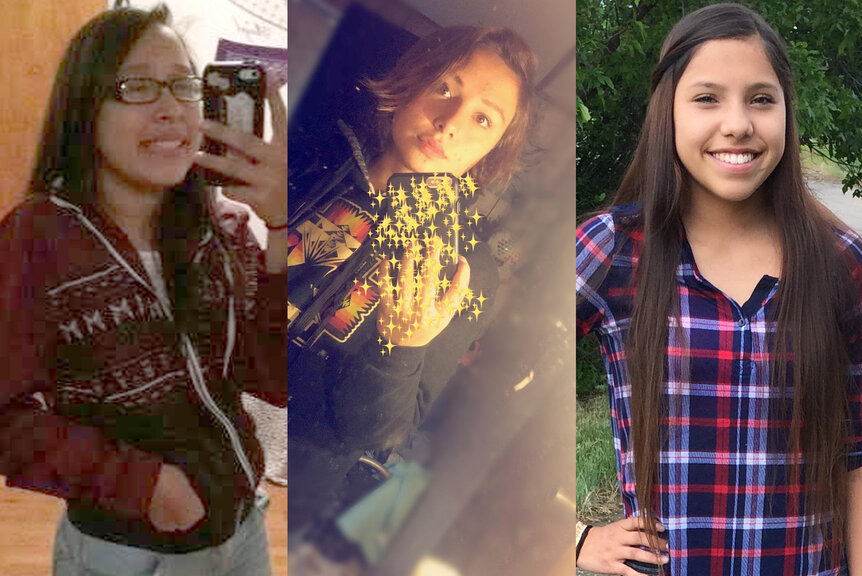Create a free profile to get unlimited access to exclusive videos, breaking news, sweepstakes, and more!
The Murdered And Missing Indigenous Women Crisis Explained
Homicide is the third-leading cause of death among indigenous women — they are murdered at rates more than 10 times the national average, according to federal data.
A quick sweep of the statistics concerning Indigenous women and homicide is enough to deeply shake anyone. The numbers reveal a horrifying crisis, as Indigenous women are killed or go missing at disturbingly high rates — 10 times the national average on some reservations, according to federal data.
Homicide is the third-leading cause of death for Indigenous women, and Native women under the age of 35 experience a higher murder risk than any other demographic in the country, according to federal data.
In the new Oxygen special "Murdered And Missing In Montana," which is available to stream on Oxygen, former Los Angeles prosecutor Loni Coombs heads to Montana to look into the cases of three Indigenous women — Henny Scott, Kaysera Stops Pretty Places, and Selena Not Afraid — who went missing and were later found dead under mysterious circumstances in the state. Along the way, she and the team reflect on the Murdered and Missing Indigenous Women (MMIW) crisis.
RELATED: How One Indigenous Community Is Finding Healing After Loss
What’s happening in Montana is not an isolated trend. Here's an overview of just some of the factors that have contributed to the crisis nationwide.
Bureaucratic Issues
One of the biggest issues that has contributed to the MMIW crisis has to do with jurisdictional matters. Indigenous Tribes are “domestic dependent nations" with rights of tribal sovereignty. So when someone is missing or killed, multiple agencies are then often involved — tribal police, the local county sheriff, sometimes even the FBI. All of these organizations have different policies and resources, and things tend to fall between the cracks, according to a 2021 Wisconsin Public Radio report. Valuable time is wasted as authority and leadership is established.
Misclassification of data is also a major issue, Wisconsin Public Radio reports. It often isn't accurate. For example, according to a report from the Urban Indian Health Institute, in 2016 there were 5,712 reports of missing American Indian and Alaska Native women and girls in the United States, but only 116 cases were entered into the federal database of missing persons.
"We know the numbers are high, but we don’t know how high," Justine Rufus, co-chair of the state’s Missing and Murdered Indigenous Women Task Force, told Wisconsin Public Radio.
Tribal people often are misidentified as another ethnicity when they are reported murdered or missing. Plus, Indigenous people in general have a distrust of the government, meaning they don't always share information with non-tribal government, according to the outlet. Inaccurate data poses a huge challenge.
"When we’re not represented in the data — in what’s happening to us and why it’s happening to us — it’s hard to evaluate," Kristin Welch, a member of the Menominee Nation and co-chair of the Missing and Murdered Indigenous Women Task Force Family & Community Impact Subcommittee, told Wisconsin Public Radio.
Lack of Media Coverage
PBS NewsHour Anchor Gwen Ifill came up with the term "Missing White Woman Syndrome," referring to the way that demographics play a role in what cases get media attention. The numbers reveal a disturbing trend. In Wyoming, for example, only 18 percent of Indigenous female homicide victims get newspaper coverage — as opposed to 51 percent for white female and male victims, according to a state report.
That media coverage is crucial. It puts pressure on law enforcement to solve the case, and helps spread awareness to bring in tips, according to The Great Falls Tribune. The lack of coverage seems to devalue certain human lives.
"It saddens me because what does this say about our value in life? We as Native women are mothers, daughters, grandmothers, sisters and aunties. Our lives matter just as much as anyone else's," Verna Volker, founder of Native Women Running, an organization that promotes Indigenous women runners, told The Great Falls Tribune. "Why aren't they reporting our women when they go missing or are murdered? Is it because we don't look like the typical American girl or how people envision America's daughter? We want that same energy when our women go missing."
Plus, when media coverage does focus on the murders of Indigenous people, it's actually more likely to portray the victim in a negative light and use stronger, more violent language, according to the Wyoming state report.
There is a general lack of interest and empathy from the public, advocates say, according to CNN.
"[Indigenous women] are assumed to have been killed, murdered or disappeared. They're assumed to have run away, to have had substance abuse issues, to have done something that caused them to go missing or to be murdered," Abigail Echo-Hawk, chief research officer for the Seattle Indian Health Board and an enrolled member of the Pawnee Nation of Oklahoma, told the outlet.
"Othering" language, prejudices toward Native people, and general attitudes have to change to help solve the MMIW crisis, advocates say.
For an in-depth look at this topic, watch "Murdered And Missing In Montana," available to watch on Oxygen.























